How to Build a Personal Brand on Social Media: Strategies
Building a personal brand on social media is not limited to influencers or business owners in today’s digital environment. Anyone may use it to stand out, express their individuality, and build deep relationships. Social media provides a fantastic platform for showcasing your abilities, character, and ideals, whether you’re an entrepreneur, professional seeking to progress in your job, or someone hoping to gain recognition in your industry.
However, how can a personal brand be developed on social media? Posting arbitrary images or quotes isn’t the point. A planned approach, consistency, and—above all—a clear grasp of what you want to convey are necessary for developing a personal brand. We’ll guide you through tried-and-true methods in this blog article to create a personal brand that connects with your audience and makes an impression.
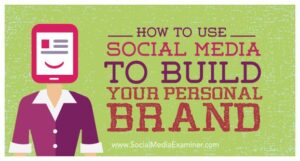
1. Establish the Identity of Your Brand
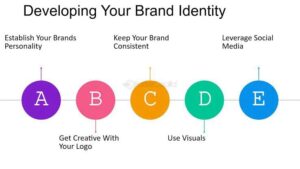
Establishing your identity and the things you wish to be recognized for on social media is the first step in developing a personal brand. Your brand will be disorganized and unfocused if you don’t have a distinct identity. When establishing your brand identity, keep the following points in mind:
. Your Values:
What do you believe in? Which values are most significant to you, and how might your material reflect these values? For instance, emphasizing eco-friendly products or raising awareness of environmental issues can help your brand represent your enthusiasm for sustainability.
. Your abilities and knowledge:
What distinguishing expertise or experience do you have to offer? Make sure to highlight your strongest attributes, whether they be your life experiences, interests, or professional abilities.
. Your Personality:
Presenting your true self to the public is the goal of a personal brand. Are you humorous, serious, sympathetic, or inspiring? Building a brand that people can relate to requires authenticity. Your posts should be a reflection of who you are.
. Your Audience:
To whom are you addressing yourself? Since it influences your messaging, content style, and the kinds of social media sites you should concentrate on, knowing your target audience is essential.
2. Maintain Uniformity Across Platforms
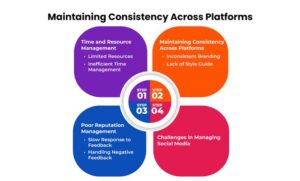
When developing a personal brand on social media, consistency is essential. It not only aids in recognition, but it also fosters audience trust. Here are a few strategies to guarantee consistency:
. Profile Pictures and Bio:
To establish a cohesive visual brand, use the same profile image on all social networking sites. Your value proposition should also be made apparent in your bio so that readers know what you stand for right away.
. Tone and Messaging:
The voice of your personal brand should be reflected in the way you interact with your audience. Be consistent in how you interact with your audience, regardless of whether you want to come across as informal, professional, or instructive.
. Content Theme:
Choose the kind of material you wish to highlight. If you work as a fitness instructor, for instance, your articles might focus on motivational quotes, exercise regimens, and health advice. If you are an expert in technology, you may write about product reviews, industry trends, and instructional materials. To let your audience know what to expect from you, stay focused on your niche.
. Posting Schedule:
Posting frequently keeps you visible and interacts with your audience. Establish a posting schedule that suits you and follow it. Over time, posting frequently will help you keep up the momentum and keep your audience interested.
3. Interact with Your Viewers
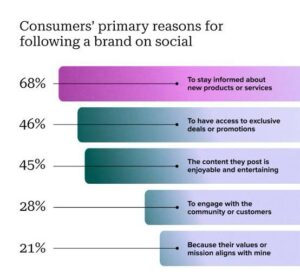
Relationships are the foundation of a great personal brand, and one of the best ways to establish a rapport with your audience is through involvement. Gaining followers is not nearly as effective as creating an active community. The following engagement tactics can help you develop your own brand:
. Respond to Messages and Comments:
Social media is a two-way dialogue. Reacting to mentions, direct messages, and comments demonstrates your concern and approachability to your followers. It builds a sense of community around your business and promotes greater interaction.
. Ask Questions and Polls:
Getting your audience to express their ideas and opinions increases engagement and helps you understand what matters to them. To start a discussion and get insight from your followers, use surveys, quizzes, and questions.
. Collaborate with Others:
Working together is one of the best strategies to increase the visibility of your own brand. You can reach new audiences and increase your credibility by collaborating with other thought leaders, brands, or influencers in your area.
. Host Live Sessions:
You may engage with your fans in real time by going live on social media sites like Facebook, Instagram, or LinkedIn. Additionally, it allows your audience to interact with you directly and ask questions, which humanizes your business.
4. Produce Excellent, Value-Based Content
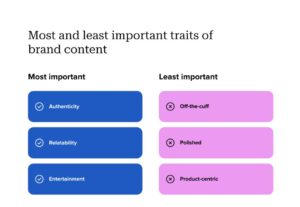
The most important thing is content, but only if it benefits your audience. When developing your own brand on social media, concentrate on producing excellent material that informs, amuses, or motivates your followers. Here are some suggestions for content:
. Educational Content:
Use tutorials, how-toes, and enlightening advice to share your knowledge. In addition to benefiting your followers, this establishes you as an authority in your industry.
. Behind-the-Scenes:
People enjoy learning about your personal and professional lives. By sharing behind-the-scenes content, such as your morning routine or the difficulties you encounter at work, you humanize your business and increase your relatability.
. User-Generated Content:
Invite your fans to tell you about their interactions with your company. This could be in the form of endorsements, success stories, or images showing them making use of your offering. Distributing this kind of knowledge promotes trust and increases social proof.
. Stories and Reels:
TikTok videos and Instagram Stories are excellent platforms for sharing brief updates, intimate moments, or captivating content that maintains viewer interest. Use them to provide brief advice, display your personality, or simply highlight your daily activities.
5. Make Use of Analytics to Adjust Your Approach

It takes more than just producing content and interacting with followers to develop a personal brand on social media. It also involves monitoring your development and improving your strategy over time. The majority of social networking sites come with integrated analytics tools that let you gauge the effectiveness of your content.
Here’s how to make the most of analytics:
. Track Engagement:
Keep an eye on the postings that receive the most shares, likes, comments, and saves. This helps you produce more of the same content in the future by revealing what appeals to your audience the most.
. Audience Insights:
To find out more about the demographics of your audience, including age, geography, and interests, use analytics tools. This enables you to modify your material to better suit their requirements.
. Post Performance:
Determine the optimum times to post and the kinds of postings that work best (carousels, photos, videos, etc.). To optimize engagement, modify your content strategy in light of this information.
6. Make Use of Several Social Media Channels

Different social media sites have varied functions, it’s critical to use each one to its full potential. Here is a quick summary of well-known platforms and how to make the most of them:
. Instagram:
Excellent for engagement, personal narratives, and visually stimulating content. Put your attention on creating a visually appealing grid, utilizing stories, and interacting with your followers via direct messages and comments.
. LinkedIn:
Ideal for thought leaders and professionals. Exchange professional updates, career advice, and industry insights. Another excellent resource for networking and building credibility in your industry is LinkedIn.
. TikTok:
This site is ideal if you like making brief, interesting videos or are trying to reach a younger audience. It’s a fantastic opportunity to demonstrate your individuality, originality, and knowledge in an entertaining and approachable manner.
. Twitter:
Great for conversing, exchanging ideas, and keeping up with current events. You can participate in live discussions on Twitter and join pertinent hashtags to increase your visibility.
. YouTube:
If you have the means, making videos can help you go deeper into subjects and establish a more intimate connection with your viewers. This platform is ideal for product reviews, tutorials, and anecdotes.
7. Remain Genuine and Flexible
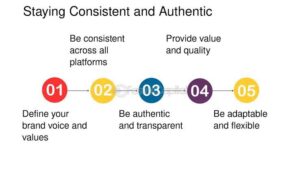
Authenticity is the key to long-term success when developing a personal brand on social media, even though methods are vital. Don’t pretend to be someone you’re not; instead, be authentic. Since people are drawn to authenticity and sincerity, be open and honest about your experiences, setbacks, and victories.
At the same time, social media is constantly evolving. Trends, algorithms, and platform features change frequently, so it’s important to remain adaptable. Experiment with new content formats, try out new platforms, and be open to feedback from your audience.
Final Thoughts
Although it requires time, work, and attention, developing a personal brand on social media is a rewarding process. You may establish a distinctive online presence by establishing your brand identity, maintaining consistency, interacting with your audience, and producing worthwhile content. To build a personal brand that accurately represents who you are, monitor your progress, make appropriate adjustments to your approach, and most importantly, stay true to yourself.
Your social media personal brand may be an effective tool for achieving both your personal and professional objectives if you have the proper plan in place. Thus, get started now and see how your online visibility increases!